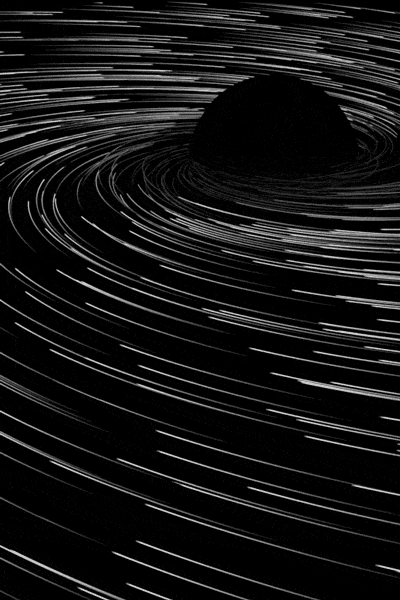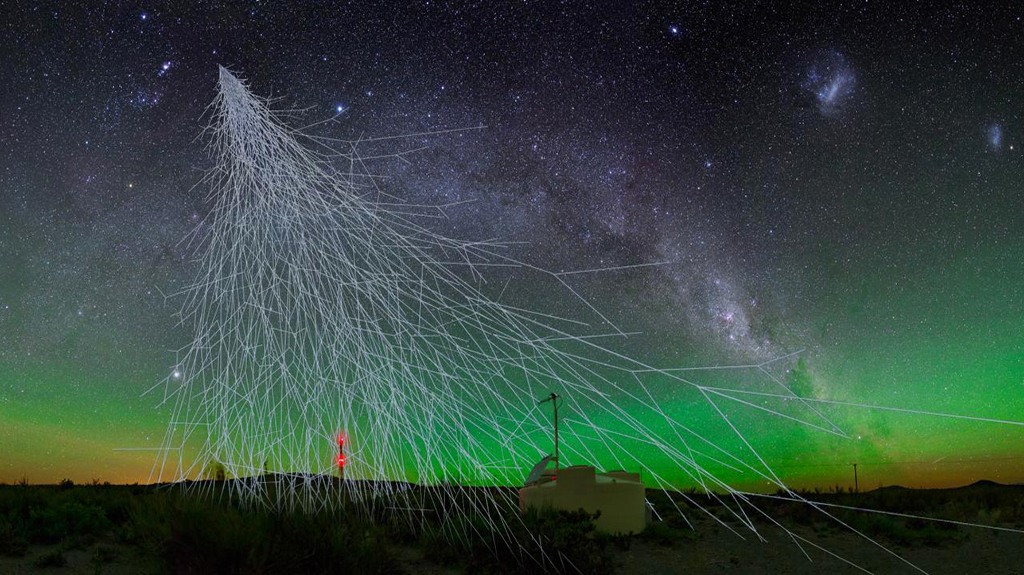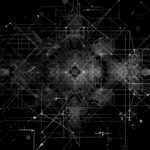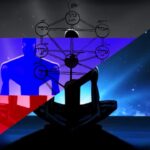1. The External Gait
Perhaps my delay in coming round to the weird and the eerie had to do with the spell cast by Freuds concept of the unheimlich.
Mark Fisher1
The concept of unheimlich, as developed by Freud from Jentsch’s psychological studies, is defined in the blurred edges of the relationship between familiar and non-familiar. If in Jentsch the disturbing arises from the disturbing appearance of non-familiar elements within the domain of the already-known, in Freud it becomes «that class of the terrifying which leads back to something long known to us, once very familiar»2. According to Fisher, the weird, similarly, brings something to the familiar that «something which ordinaily lies beyond it»3 through «the conjoining of two or more things which do not belong together»4. If the Freudian unheimlich arises from the mute settlement of the stranger in the familiar, in a movement that observes, from the inside, an outside that contaminates an inside, the weird represents a reverse movement that introduces the possibility of observing the inside from an outside point of view. Anna Greenspan, a former member of the CCRU, helps us to define what the outside, that Fisher only indicates as co-presenting the anthropic experience of reality, is:
In colloquial language the terms inside and outside are used to demarcate simple spatial relations. The boundaries between them are physical (…). In philosophical language, however, the terms inside and outside designate a relation that is altogether more impermeable .(…) interiority, as a philosophical concept, indicates an absolute segregation 5.
If in the spatial dimension the border between inside and outside is never completely inaccessible – «walls can always be scaled, doors opened, and gates unlocked»6 – it, if translated in terms of ontological threshold, appears as impenetrable in its indefiniteness. In this way the interior does not act through physical boundaries, but through an imperceptible veil that defines what can be conceived. As Matt Colquhoun suggests, Fisher’s outside can be defined as «a mode of radical exteriority – philosphically understood as that which is fundamentally beyond the scope of human perception, experience and intuition»7. The weird is thus a kind of perturbation that recalls a sense of incorrectness: «a weird entity or object is so strange that it makes us feel that it should not exist, or at least it should not exist here»8. What is fundamental, within the dynamic triggered by the weird, is how its emergence manifests not only the peculiarity of the new object, but also highlights the obsolescence of our reference systems. Since the object – its being here and now – cannot be questioned, the only explanation that can be given must imply the inconsistency of our conceptual and interpretative methods: «the weird thing is not wrong, after all: it is our conceptions that must be inadequate»9. The weird is therefore not so much related to the supernatural as to the non-coded. Vampires, werewolves, undead, are all easily recognisable elements with a rich tradition behind them: they have been conceived, narrated and handed down within a culture, mixing known elements of the natural world; they have been placed beyond the natural simply by inverting the polarity of elements that are internal to the known world. For this reason, according to Fisher, a black hole possesses a much higher weird charge than these entities: the ways in which it acts through space and time are inconceivable through common experience; since the imploded celestial body actually exists, it will be our conception of space-time laws and the limits of our knowledge of the universe that will need to be rethought.

2. Overlaps
What can the thing have been made of? I saw it and felt it, and they all leave footprints. It was surely made of matter—but what kind of matter? The shape can’t be described. It was a great crab with a lot of pyramided fleshy rings or knots of thick, ropy stuff covered with feelers where a man’s head would be. That green sticky stuff is its blood or juice.
~
If I say that my somewhat extravagant imagination yielded simultaneous pictures of an octopus, a dragon, and a human caricature, I shall not be unfaithful to the spirit of the thing. A pulpy, tentacled head surmounted a grotesque and scaly body with rudimentary wings; but it was the general outline of the whole which made it most shockingly frightful. Behind the figure was a vague suggestion of a Cyclopean architectural background.
~
The Thing cannot be described—there is no language for such abysms of shrieking and immemorial lunacy, such eldritch contradictions of all matter, force, and cosmic order.
from The Call of Cthulu, by H. P. Lovecraft,
One of the main areas of analysis of weird dynamics is identified by Fisher in the endless narrative production of H. P. Lovecraft. As M. Colquhoun writes, Lovecraft’s interpretation of the weird differs from the one carried out by 20th Century horror literature by authors such as M.R. James: if in the latter the outside was always codified in the form of hostile entities from which to escape, in Lovecraft there is not only horror, but a sinister fascination that pushes the characters towards the redefinition of the limit. In Lovecraft the exterior is presented as crystallized in an anomalous entity that cannot be interpreted and cannot be represented: despite the meticulous description of the chimerical composition of the creatures, the reader is never placed in the condition of being able to visualize it in its paradoxical entirety: «after (1) the declaration of indescribability, and (2) the description, comes (3) the unvisualisable»10. The overabundance of details prevents the construction of a mental figure that can condense them in itself; the imaginative capacity of the user is undermined through a schizophrenic bombardment of incoherent features and figures that go beyond the realm of the possible. Among the pages of A Thousand Plateaus, more precisely inside Memories of a Sorcerer, Deleuze and Guattari offer a synthesis of Lovecraftian outsideness as follows: «the anomalous is neither an individual nor a species; it has only affects, it has neither familiar or subjectified feelings, nor specific or significant characteristics»11. Lovecraft’s outsidness, according to the two French philosophers, is something that goes beyond the «teeming, seething, swelling, foaming»12 edge: it is the anomalous, an edge-phenomenon that escapes human classifications. It is not limited to its own non-form but also contaminates the interpretative schemes of reality: the geometries described by Lovecraft are often non-Euclidean and «redolent of spheres and dimensions apart from ours»13. Lovecraft himself admitted that all his stories were based on the «premise that common human laws and interests and emotions have no validity or significance in the vast cosmos-at-large»14. In order to put the outside world at the centre, it is necessary to ensure that the founding elements of the human race, such as organic life, good and evil, love and hate, are considered mere contingencies. It is not the inside that looks outwards, but the outside that bursts into the inside: this integration, defined by Fisher as catastrophic, leads to a short circuit of the ontological system of reality, from which follows the deflagration of the inconsistent illusion of the inside. What is essential to the concept of the weird is the duplicity of its dynamics of apparition: attraction and repulsion coexist, on the one hand as terror for the unknown, on the other as a desire to unveil: a (ir)reality that emerges intermittently, at the interstices of the real, pushing us to question it.

3. The Hyperobject that therefore we are in
Not only do I fail to access hyperobjects at a distance, but it also becomes clearer with every passing day that “distance” is only a psychic and ideological construct designed to protect me from the nearness of things (…) the problem is not that things are truly distant, but that they are in our face— they are our face?
Timothy Morton15
The black-hole-object, having immanentized weirdness within itself, can be considered as part of the particular class of objects that Timothy Morton termed Hyperobjects. In the introduction of his book called Hyperobjects, the Anglo-Texan philosopher describes how an object of this kind could be «a black hole (…) the biosphere, or the Solar System (…) the sum total of all the nuclear materials on Earth (…) e the very long-lasting product of direct human manufacture»16. The concept that gives the title to the essay has been introduced by Morton in The Ecological Thought, in which it is described in terms of a material configuration that is grasped as «the demonic inversion of the sacred substances of religion»17 constructed by «materials from humble Styrofoam to terrifying plutonius»18 which «will far outlast current social and biological forms»19. The properties that Morton bestows upon hyperobjects – viscosity, non-locality, phasing, temporality and intersubjectivity – configure the latter as weird entities capable of leading us to «force something on us, something that affects some core ideas of what it means to exist»20. The hyperobject, Lovecraftianly unthinkable, is at the same time the cause of a rethinking: unthinkable in its own entirety, it forces us to rethink the interpretative instruments that it reveals as inadequate. Through what Husserl defines as perspective overshadowing, he describes how the aspect of an object always gives itself as a unilateral manifestation, since every object cannot simultaneously be experienced according to the totality of properties of which it is constituted as a sensible thing. As much as you spin a coin, it will never be possible to see its hidden side as it is, indeed, hidden: the coin has a hidden side «that was seemingly irreducible»21. According to Morton, every object withdraws itself irreducibly. The gap between phenomenon and thing, in a Kantian sense, can be useful to illustrate the way in which we come into contact with hyperobjects: if, according to Kant, «you can feel them on your head—but you can’t perceive the actual raindrop in itself»22 – and that which is perceived as rain is nothing but the anthropomorphized interpretation of the entity-rain – then the same fracture will stand between the weather condition and global climate as a whole. If there is no coincidence between thing and phenomenon, following Morton, the Kantian intuition should be extended beyond the gap between human being and world: the thing is the fracture itself that stands between that which it is and the way it appears. Graham Harman, one of the founders of OOO (Object-Oriented Ontology), shows the underlying contradiction of human being’s conceptualisation of himself: on the one hand, scientism naturalizes consciousness as one entity among others, and, on the other hand, it gives it a kind of privileged relationship with the world that is different from that which could be established between an animal and the world. The ability to negate and transcend the immediate experience given to (human) thought is something negated to inert matter: admitting the non-existence of human beings as difference, scientism «elevates the structure of human thought to the ontological pinnacle»23. Morton points out how the result of such a double-negation is similar to the Hitchcockian pull focus: while remaining stopped in the same place, the place around us behaves as if we were moving, thus distorting our perception of reality. The theoretical proposal of OOO and hyperobjects are the causes of what Morton defines as being-quake, the displacement of the ontological structure of the world.
The ground of being is shaken. There we were, trolling along in the age of industry we received information from aliens24
Aliens are the unknown, the un-codified: the outside that incompletely overlooks the inside, leaving observable and enveloping glimpses. These glimpses act as menotimies – the raindrops, translated in annual rainfall, become measurable quantities that define global warming – because it is possible to observe only some parts of a hyperobject at a given moment. All the decisions that we take – argues Morton – are taken in relation to hyperobjects: when we turn on our car we act on global warming; the sheer fact of turning the keys in the car panel is «intimately related to philosophical and ideological decisions stemming from the mathematization of knowing»25, especially that of time and space. How, however, do hyper-objects pervade every decision-making field? Might the invasion of hyperobjects be considered, to all intents and purposes, an invasion performed by the weird ?
End of part one.
- M. Fisher, The Weird and the Eerie, Repeater Books, London, 2016, p. 9.
- S. Freud, The Uncanny, en. tr. D. Mclintock, Penguin Books, London, 2003, p. 124.
- M. Fisher, The Weird and the Eerie, p. 10.
- Ibidem, p. 11.
- A. Greenspan, Capitalism’s Trascendental Time Machine, PhD Thesis at University of Warwick, 2000.
- Ibidem.
- M. Colquhoun, Egress: on mourning, melancholy and Mark Fisher, Repeater, London, 2020, p. 9.
- M. Fisher, The Weird and the Eerie, p. 15.
- Ibidem.
- Ivi, p. 23.
- G. Deleuze, F. Guattari, A Thousand plateaus, tr. en. B. Massumi, University of Minnesota Press, London, 1987, p. 244.
- Ibidem.
- M. Fisher, The Weird and the Eerie, p. 23.
- Ivi, p. 16.
- T. Morton, Hyperobjects, University of Minnesota Press, Minneapolis, 2013, p. 28
- Ivi, p. 1
- T. Morton, The Ecological Thought, Harvard University Press, Harvard, 2010, p. 135.
- Ibidem.
- Ibidem.
- T. Morton, Hyperobjects, p. 15.
- T. Morton, Hyperobjects, cit, p. 11.
- Ibidem.
- G. Harman, Critical Animal with a Fun Little Post, in «Object-Oriented Philosophy», 17th October, 2011.
- T. Morton, Hyperobjects, cit, p. 19.
- Ivi, p. 20.







